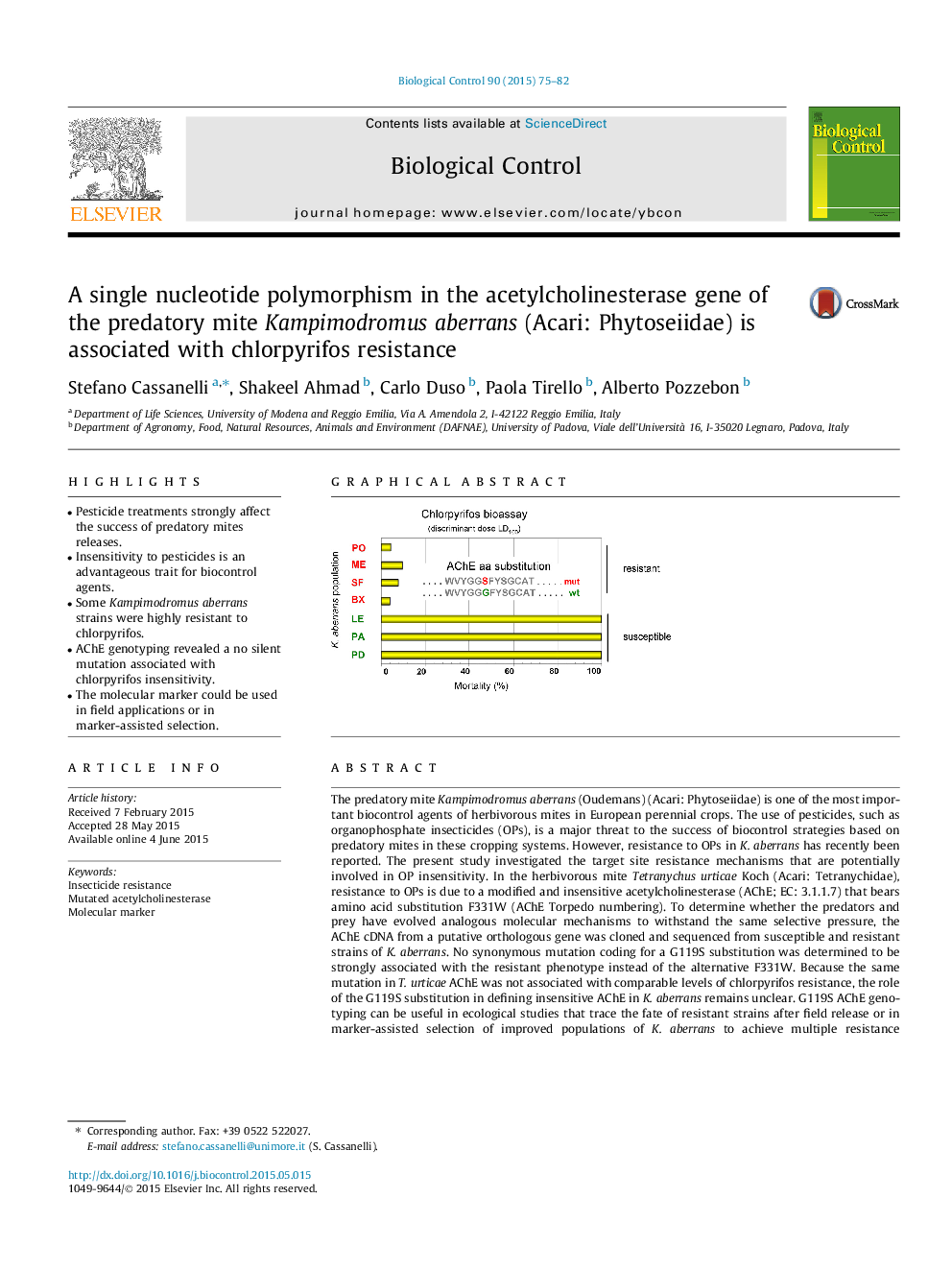| Article ID | Journal | Published Year | Pages | File Type |
|---|---|---|---|---|
| 6372518 | Biological Control | 2015 | 8 Pages |
â¢Pesticide treatments strongly affect the success of predatory mites releases.â¢Insensitivity to pesticides is an advantageous trait for biocontrol agents.â¢Some Kampimodromus aberrans strains were highly resistant to chlorpyrifos.â¢AChE genotyping revealed a no silent mutation associated with chlorpyrifos insensitivity.â¢The molecular marker could be used in field applications or in marker-assisted selection.
The predatory mite Kampimodromus aberrans (Oudemans) (Acari: Phytoseiidae) is one of the most important biocontrol agents of herbivorous mites in European perennial crops. The use of pesticides, such as organophosphate insecticides (OPs), is a major threat to the success of biocontrol strategies based on predatory mites in these cropping systems. However, resistance to OPs in K. aberrans has recently been reported. The present study investigated the target site resistance mechanisms that are potentially involved in OP insensitivity. In the herbivorous mite Tetranychus urticae Koch (Acari: Tetranychidae), resistance to OPs is due to a modified and insensitive acetylcholinesterase (AChE; EC: 3.1.1.7) that bears amino acid substitution F331W (AChE Torpedo numbering). To determine whether the predators and prey have evolved analogous molecular mechanisms to withstand the same selective pressure, the AChE cDNA from a putative orthologous gene was cloned and sequenced from susceptible and resistant strains of K. aberrans. No synonymous mutation coding for a G119S substitution was determined to be strongly associated with the resistant phenotype instead of the alternative F331W. Because the same mutation in T. urticae AChE was not associated with comparable levels of chlorpyrifos resistance, the role of the G119S substitution in defining insensitive AChE in K. aberrans remains unclear. G119S AChE genotyping can be useful in ecological studies that trace the fate of resistant strains after field release or in marker-assisted selection of improved populations of K. aberrans to achieve multiple resistance phenotypes through gene pyramiding. The latent complexity of the target site resistance in K. aberrans vs. that of T. urticae is also discussed in the context of data from the genome project of the predatory mite Metaseiulus occidentalis (Nesbitt) (Acari: Phytoseiidae).
Graphical abstractDownload full-size image
